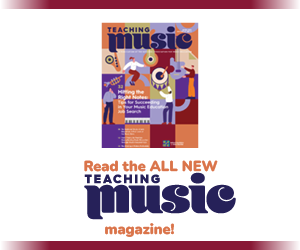RESOURCES
Standing in the Gap: A Survey of Middle Level Music Education in the United States and Its Territories (2020-2021)

/ Publications & Resources / Resource Library / Standing in the Gap: A Survey of Middle Level Music Education in the United States and Its Territories (2020-2021)
For at least the past century, music educators have advocated for the right of all students to receive music learning at school. Recent discourse has transformed this mission into a discussion of access, equity, and inclusion for all students across K–12 as well as a concern for diversifying the teaching force prepared to teach music education.
While all students deserve access to quality music education and qualified music teachers prepared to teach them, there are some gaps in the field’s knowledge of how this mission is enacted across the United States. One such gap in knowledge is focused on middle level or 5th–8th grade music learning, a critical period in both student and program development. This survey of public and public charter schools, conducted in 2020–2021, was designed to collect demographic data on available music learning opportunities and the music teachers who work at the surveyed schools. The findings from this study provide a national demographic portrait of available music learning opportunities, the impact of COVID-19 on music learning availability, the teaching responsibilities, demographics, and perceived preparation of those who teach 5th–8th grade music learning. Based on our findings, we offer five suggestions for consideration by music teachers, music teacher educators, school administrators, music researchers, and music advocates.
While this study was funded by both NAfME/SRME and the Rutgers Research Council, the views presented herein are solely those of the authors. Stephanie Cronenberg and Brandon Williams.
Category
- Advocacy
- Diversity, Equity, Inclusion, and Access (DEIA)
- Music Educator Workforce
- Research in Music Education
Resource Type
- Report
Teaching Level
- Junior/Middle School
Year Added
2022



